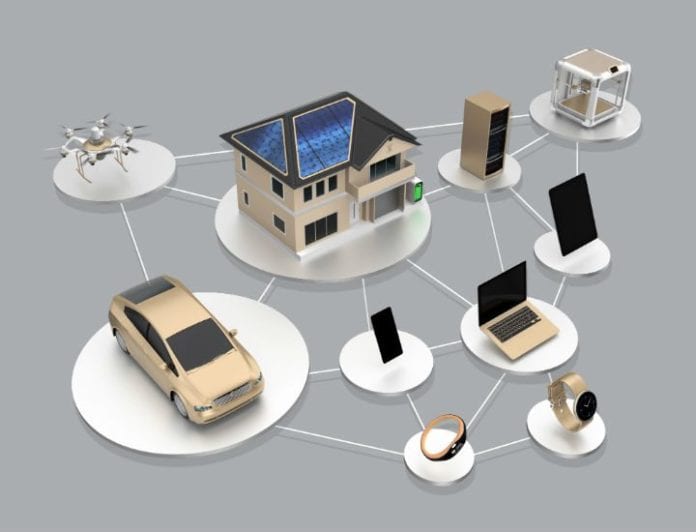Business, technology and operational challenges could trip up service providers as they look to take advantage of IoT opportunities
This is the second article in a three-part series examining the opportunity, challenges and course of action for service providers as they tackle the “internet of things.”
By all accounts, the “internet of things” is going to be big – really big. According to Cisco, the global IoT market will be worth $14.4 trillion by 2022. That’s a lot of devices and objects connected to the internet and to each other – an estimated 500 billion by 2030, Cisco also reports. It means a lot of applications are needed to manage these devices, as well as internet connectivity to send data from each device to the platform from which they are being managed.
Overall, the market looks very compelling, especially for service providers that own the connectivity ecosystem. The networks they already have in place are the right size for today’s IoT traffic, and the networks they are planning – “5G” – should be able to support the IoT demand into the foreseeable future.
However, like many great opportunities, there are also significant challenges with entering the IoT or growing an existing presence. These issues span all areas of a service provider’s business: business challenges, technology challenges and operational challenges. Let’s look at each of these in greater detail:
Business challenges
Many of the business challenges are outside of a service provider’s direct business, but impact them nonetheless. Because IoT is growing so quickly, it’s easy to consider it a mature market. However, the term “internet of things” is less than 20 years old, and in practicality is much younger. It’s only over the past several years that its true potential emerged and many would argue that its true potential hasn’t been imagined yet.
Of these business challenges, what’s the biggest? There’s too much “noise” in the market – too many players – making it difficult for service providers to understand who is doing what, and what is real and what is hype. In addition, leadership and ownership of IoT is fragmented and undefined. Will it be service providers owning the IoT ecosystem? System integrators? Edge devices? Applications providers?
Other business challenges include:
Finding the right partner
Finding and managing relationships with partners with IoT solutions expertise can be difficult, as can be determining revenue share between partners.
Adopting agile business processes
The necessity that service providers adopt agile business practices to keep up with the fast-paced IoT market is slowing some providers down.
Monetizing IoT
Telecom providers must devise strategies to identify, access, expose, share and unlock the value in data accumulated in the IoT world in real time.
Developing a skilled workforce
Given the brief history of IoT, it can be difficult – and potentially expensive – to find and hire team members with the right experience.
Technology challenges
Getting an IoT business strategy off the ground can be challenging, but it becomes even more of a challenge when dealing with legacy systems. These technology challenges may be legacy networks or legacy back-end systems – or both. Many of the early machine-to-machine applications ran over a 2G network, and those are being decommissioned. Now providers are looking at building 5G networks to support IoT traffic, but for now 3G and 4G networks are carrying the bulk of traffic. At the same time, IoT is a more complex transactional model as well, so back-end systems need to be modernized or replaced to provide the flexibility service providers require.
Additional technology challenges include:
Ensuring compliance with new IoT standards
Minimum standards must be introduced to optimize communication between devices.
Creating modular and reusable solutions
Service providers don’t know what is around the corner in terms of applications – or vertical markets – they need to support. The solutions they choose need to be as flexible as possible to accommodate the “next big thing.”
Operational challenges
The real-time nature of IoT means systems need to be ready to support real-time data and trillions of transactions from the billions of diverse devices collecting it. Analytics of data patterns, consumer information and usage patterns needed to make crucial billing decisions must be automated.
Other operational challenges include:
Designing IoT-specific pricing models
Existing models were built for voice and data, not tiny IoT transactions, many of which may only happen once a day or once a week.
Modifying operational support processes
Flexibility is key when dealing with IoT transactions. Service providers need to ensure their service catalogues and operation support processes are optimized for IoT service delivery.
These challenges are not insurmountable. A handful of service providers are already seeing significant success as they navigate their role in the market. However, understanding these challenges from the outset and developing a holistic IoT strategy is paramount to not only a successful entry into IoT, but also longevity in this market.
James Comfort is the manager of service delivery at Excelacom. Comfort has seven years of experience in the information technology consulting and telecommunications industries and is PMP certified. He has held various roles during his tenure at Excelacom, including project management, deployment and strategic planning of delivery systems. Comfort’s responsibilities include working with onshore and offshore resources to identify and implement quality solutions, as well as maintaining effective relationships with clients and supporting their business and operational needs. Comfort earned a Bachelor of Arts degree in Language and International Trade from Clemson University in South Carolina.
Editor’s Note: In an attempt to broaden our interaction with our readers we have created this Reader Forum for those with something meaningful to say to the wireless industry. We want to keep this as open as possible, but we maintain some editorial control to keep it free of commercials or attacks. Please send along submissions for this section to our editors at: dmeyer@rcrwireless.com.
Photo copyright: cheskyw / 123RF Stock Photo

